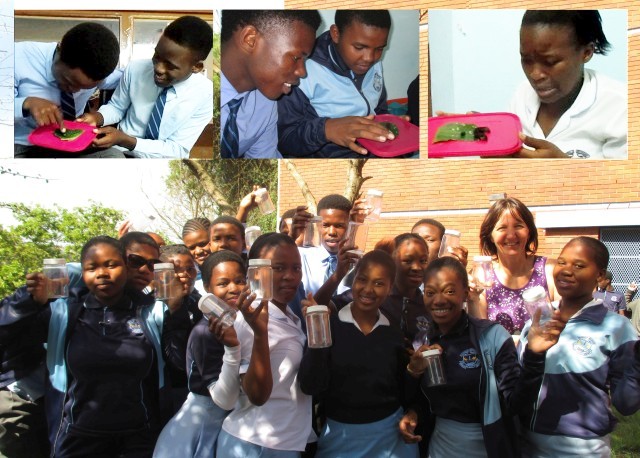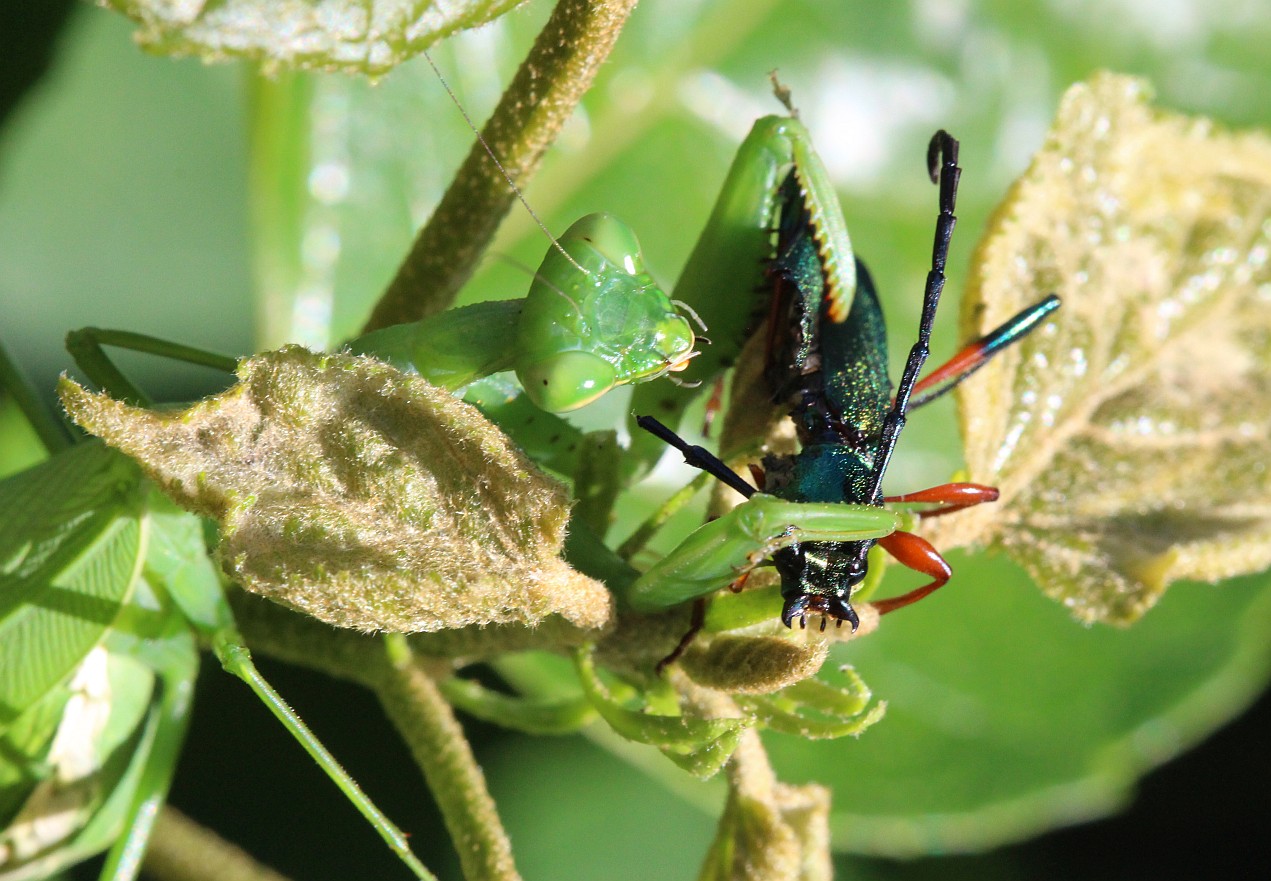
“If you talk to people, they have a gut feeling. They remember how insects used to smash on your windscreen”… they call it the windshield phenomenon.
This worrying article appeared in May, reporting that over the last 25 years 80% of insects have disappeared from multiple sites in Western Europe. While the world had taken note of shrinking vertebrate populations (58% lost from 1970 till 2012), smaller creatures were being overlooked (evidenced by the lack of long-term insect population data).
The plight of insects finally entered our consciousness through the distressing decline in bees. Bees pollinate many of our crops – about 100 different fruit and vegetables (though wild pollinators do a much better job). In short, it seems the sixth great extinction of the anthropocene is well underway.
However, if it truly is, then there is no hope, it is too late, for it cannot be stopped, due to a “secondary cascade of …devastating chain reactions that no one understands.” (Doug Erwin) He says, “to a certain extent [people who claim we’re in the sixth mass extinction] are claiming it as a way of frightening people into action, when in fact, if it’s actually true we’re in a sixth mass extinction, then there’s no point in conservation biology.”
Our local futurist, Clem Sunter, in a recent talk to a Mensa audience, included this wave of man-made extinctions in a list of things he calls “a new normal to which we will all have to adapt”. He said, “the displacement of fauna and flora is set to intensify …meaning that the planet will be far less diverse […] in one hundred years’ time. Many unforeseen consequences may occur to the ecosystems […] as the links in the chain disappear.”
I am not ready for this ‘new normal’. Such defeatist talk is premature. For now the extinctions are mainly of ranges and populations, not yet (too much at least) of species. The degree of population and range loss is serious enough and “the time to act is very short” (Paul Ehrlich). But for now there is still hope. If you restore the flora, the animals comes back (eg. see here or here).
The worst fallout of the anthropocene can still be averted if we act immediately and decisively.
And what exactly should we do? Restore indigenous ecosystems and protect what is left. Get rid of invasive aliens, plant indigenous trees. Everyone. Everywhere. Now.









 The
The 











 What a wonderful topic: the endless variety of life forms and living spaces.
What a wonderful topic: the endless variety of life forms and living spaces. After a presentation on the subject, the grade 11s from the
After a presentation on the subject, the grade 11s from the 


 By the time we went outside to hunt for some insects in the school yard, they were totally excited. They whooped with joy when they caught an ant. Or a common house fly.
By the time we went outside to hunt for some insects in the school yard, they were totally excited. They whooped with joy when they caught an ant. Or a common house fly. 



 To mark the day, I visited a local school primary school and spoke to the Grade 6s about the environment, Half Earth Day and of course… insects!
To mark the day, I visited a local school primary school and spoke to the Grade 6s about the environment, Half Earth Day and of course… insects!




 2020Vision is an environmental education initiative that wants to give young people ‘glasses’ of passion and knowledge. Humanity must learn to coexist in harmony with nature. The world needs passionate young people who can see clearly, who understand the workings of nature and global environmental challenges, who know what can and must be done about it and who are motivated to act for the environment, in their sphere of influence, both now and in their future careers.
2020Vision is an environmental education initiative that wants to give young people ‘glasses’ of passion and knowledge. Humanity must learn to coexist in harmony with nature. The world needs passionate young people who can see clearly, who understand the workings of nature and global environmental challenges, who know what can and must be done about it and who are motivated to act for the environment, in their sphere of influence, both now and in their future careers. 

 Last week I gave a lecture to over 300 1st and 2nd year student teachers at UKZN School of Education, Edgewood Campus. Wow! What a thrill! I was delighted to discover that – truly – insects have universal appeal. The students exclaimed, laughed, participated enthusiastically, happily swept along by insect stories, which are always fresh and new and bizarre. The antics of insects can enthrall anyone!
Last week I gave a lecture to over 300 1st and 2nd year student teachers at UKZN School of Education, Edgewood Campus. Wow! What a thrill! I was delighted to discover that – truly – insects have universal appeal. The students exclaimed, laughed, participated enthusiastically, happily swept along by insect stories, which are always fresh and new and bizarre. The antics of insects can enthrall anyone!












 This weekend I participated in the
This weekend I participated in the 













 A
A  It has been the most wonderful beetle holiday, with amazing beetle sightings. It helped that we briefly visited Hluhluwe Game Reserve, staying at Bushbaby Lodge. The bushveld teems with beetles, especially now that there has been some rain after the worst drought in recent years. The best treat were various blister beetles, which Prof Brothers from UKZN, who proofread my book, said should have been included. Of course they should have! Duh! Next edition…
It has been the most wonderful beetle holiday, with amazing beetle sightings. It helped that we briefly visited Hluhluwe Game Reserve, staying at Bushbaby Lodge. The bushveld teems with beetles, especially now that there has been some rain after the worst drought in recent years. The best treat were various blister beetles, which Prof Brothers from UKZN, who proofread my book, said should have been included. Of course they should have! Duh! Next edition… Then my husband gave me a gorgeous beetle book for Christmas, so I could fall in love some more. 600 spectacular beetles from across the world.
Then my husband gave me a gorgeous beetle book for Christmas, so I could fall in love some more. 600 spectacular beetles from across the world.







Comments